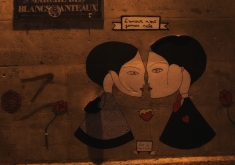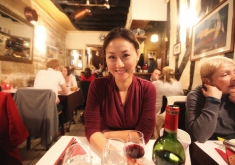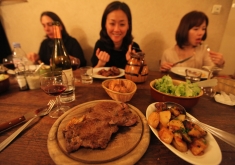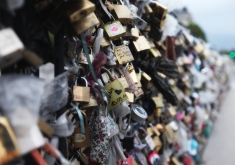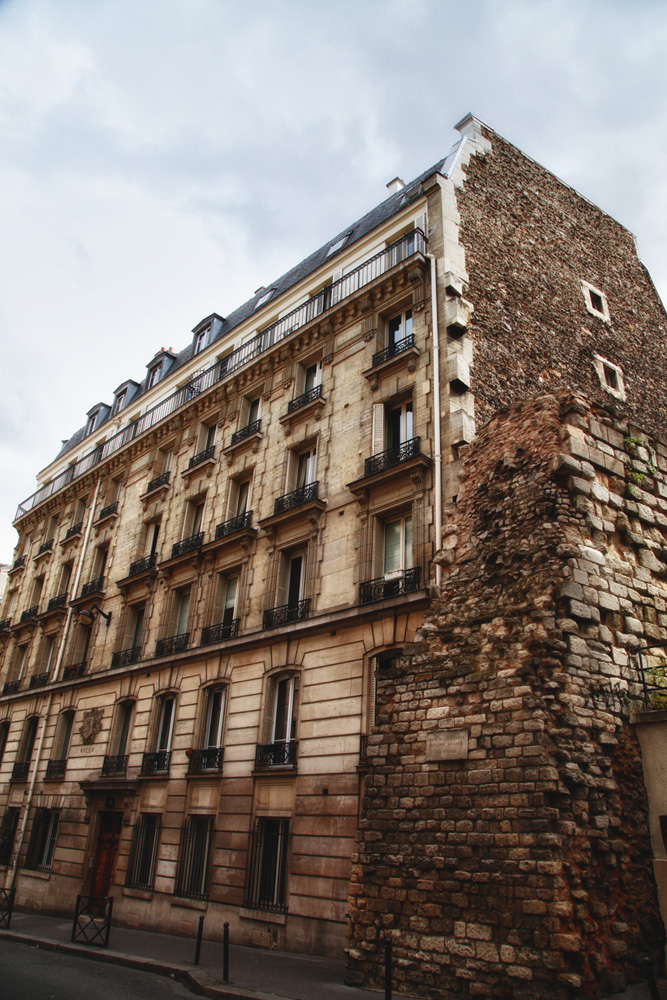ABOUT
Tray Tables Up is a window into the world that we all share. It’s a written and photographic journal of people we meet and experiences we amass from our travels. Most of our waking moments are spent planning our next adventure. We live for these experiences and for the transformation that travel and food, Read More
One of my not-so-secret joys is discovering a pub or beer hall that brews their own magical elixir. The result? You discover limitless expressions of flavor – subtle hints of coriander, orange peel and other spices. It’s an adventure in taste and one where the beer-maker leads you away from the mainstream equation of what’s considered to be good beer.
I’ve uncovered a number of pubs in the United States and Europe that fit this bill. Surprisingly, it was a trip to South America in 2010 that uncovered a large concentration of brewpubs, a veritable treasure trove of watering holes, many of which were located in local homes!
While touring the mysterious and beautiful agricultural terraces of Peru’s Sacred Valley and just outside the historic Inca city of Ollantaytambo, we encountered countless red bags hung on the ends of wooden poles that were mounted on the sides of village homes. After the twentieth or so wooden pole with a red bag flapping in the wind, I pointed one out and asked our guide about the significance of this strange sight.
The red bags advertised the location as a chicharia – a pub, and I use the term “pub” loosely, that brews their own maize-based beer called chicha. Our guide explained that many local residents brew different varieties of chicha for sale to supplement their incomes.
After inquiring about the different types of chicha, our guide detected my growing interest in the home brew. Anticipating my next line of questioning, he attempted to preemptively shoot down my next logical request. “Your Western palette probably won’t like it and usually, a lot of tourists get very sick after trying chicha,” he warned.
“Not a problem. I really want to try this chicha!” My wife rolled her eyes, of course, especially given my knack for diving off the deep end when it comes to food or drink. Fortunately, my persistence paid off. Since our tour was private and devoid of the limitations of a typical rigid tourbus itinerary, we had the option of defining our agenda as we went along… and passing on the local hootch would have been more blasphemous than skipping out on sightseeing Machu Picchu in my book.
We stopped at a local chicharia that our guide knew well. The recognizable wooden pool with a red bag was displayed on the outside of the home. While we were the only guests, the chicharia was open for business and the chicha was flowing!
Once we entered, it was evident that we were in someone’s home. The “bar” consisted of a simple heavy wooden table with bench seating set in what was clearly the kitchen of the home. The floors were loosely packed dirt and the cement walls were blackened with soot from years of wood fire cooking. A make shift planked roof partially covered us from the elements.
A few large ceramic casks sat near the large wooden table with white cloth draped over the tops of the casks, undoubtedly filled with chicha. The unmistakable scent of magical fermentation was alive in the room.
Our guide introduced us to Flora, the owner and operator of the chicharia. She eagerly plunked down two large glasses of chicha on the wooden table. The brew, almost a luminescent golden color, looked vaguely like unfiltered Belgian wheat beer.
The typical recipe for Chicha starts with grinding corn and boiling it with water and sugar. The resulting liquid is strained through a basket that filters out most, but not all, of the corn solids. Stored in large ceramic vats, the batch is left to ferment for several days. The brew, conveniently, is served directly from the ceramic vats.
I’ve often heard chicha described as sour and unpleasant. I found the flavor to be mildly sweet. There was also a tinge of sourness that balanced the sweetness. There was some effervescence that accentuated the sourness on the tongue. This isn’t a combination that everyone would like, given the conflicting flavors.
Texturally, chicha might be a challenge for some since fragments of corn are present in every sip. I’m sure these little corn nuggets could easily be filtered out, but I actually enjoyed the rustic experience, chunks and all. If anything, chicha was refreshing to my palate… especially on a hot day.
Chicha and chicharias are a part of a rich thousand year tradition of the Andean region of South America. If you find yourself traveling the historic countryside of Peru, you’ll no doubt bump into a wooden pole with a red bag hanging of the end. If you have a strong stomach, roll the dice and give chicha a shot!
Closing out my series of posts on Paris, here are a few photos from the trip. Photography was a bit of a challenge since it was pouring nearly every day!
So, I find myself in Paris for the first time. Alone. (Need the backstory? Read the last post here.)
My natural tendency is to avoid group tours or anything super touristy. I can’t stand getting herded on a tour bus to be carted around to go-to attractions for rehearsed descriptions that barely scratch the surface of what we’re being shown.
I do, however, love the whole process of investigating a new destination. I love researching first-hand accounts, TripAdvisor.com and other online resources. This process always seems to surface the sights and attractions that interest me the most. Creating my own itinerary has always been the way to go.
Since this was a trip of firsts, I decided to break from tradition. My good friends, Yai and Javier Moreno, used Paris Greeters during their trip to Paris in 2010. (Incidentally, they got engaged in Paris. Lovely mugs here.) I decided to give it a shot and signed up on the Paris Greeters website.
Paris Greeters is part of an international network known as Global Greeters. Volunteers, who have a passion for their city or locale, make up the back-bone of the Greeters network. On top of that, the service is absolutely FREE! A donation is welcome, but not necessary. Signing up gets you paired with a “greeter” who speaks your language. In addition, you can specify your interests – things like architecture, food, culture, history, shopping, public gardens, government sites and so on.
My first day in Paris was spent catching up on sleep, visiting the Louvre and figuring out how to order a croissant and coffee in French without embarrassing myself. Given that I had only three days alone before Joyce returned to Paris from her business trip, I wanted to maximize my lost-guy-in-Paris experience to the fullest! Paris Greeters provided that fulfillment on my second day.
My assigned greeter, Emmanuel, met me at 2pm on April 26th in Quartier Latin (the Latin Quarter) of Paris. I hit it off with Emmanuel immediately. He reminded me of my best friend, Thibaut, who also happens to be French. (If you know Thibaut, imagine him hopped up on coffee and you’ll have an accurate caricature of Emmanuel.)
Emmanuel arrived, huffing and puffing, on a beige bicycle. His love for Paris was evident within the first five seconds of meeting him. Hopping off of his bike, while introducing himself and still out of breath, he was eager to tell me that his ride was part of the new bike share program in Paris.
I couldn’t help but be swept up in Emmanuel’s excitement, pride and vigor as we strolled around Quartier Latin, an area of Paris that is home to a number of universities, schools and higher education institutions.
The following are just a few of the notable sights and stories that Emmanuel introduced me to in Quartier Latin:
Les Arènes de Lutèce
Just prior to meeting Emmanuel, I walked by a nondescript structure that resembled a crumbling ampitheater. It was lunch time with people seated on the curved rocky terraced steps, talking and eating. Kids were playing football (err.. sorry, soccer for my American friends!) I thought it was simply a public park space.
I returned with Emmanuel to discover what I had completely missed. The ampitheater, known as Les Arènes de Lutèce, is one of the most important, if not THE most important, remnant of the Roman-era of Paris. The ampitheater dates back to the 1st century A.D. and was once the site of gladiator competitions when Paris was known as Lutèce.
The arena was filled in during the 13th century and later rediscovered in 1860 when nearby Rue Monge was being constructed.
Wall of Philippe Augustus
The Wall of Philippe Augustus was built just prior to the third crusade (approximately 1190-1215 A.D.) to protect Paris. While the majority of the wall is buried or integrated into buildings, remains of the wall are still visible in Quartier Latin on Rue Clovis, just east of the Pantheon.
Saint-Étienne-du-Mont
This church, located right next to the Panthéon, bears the name St. Etienne, but is devoted to St. Geneviève, the patron saint of Paris. St. Geneviève is credited with helping to avert an attack on Paris by Attila the Hun.
The highly ornate church displays a fragment of a finger, the only remains left of St. Geneviève.
Le Coupe Chou
Le Coupe Chou (English Translation: The Cabbage Cutter – a type of barber’s razor) is a restaurant located in Quartier Latin. While I did not eat here, I stood outside the beautiful entrance to the restaurant for ten minutes listening to Emmanuel’s tall tale behind the name of the restaurant.
As legend would have it, a barber slit the throats of unsuspecting students from nearby schools sometime during the thirteenth century. The bodies were then processed into pâté by a butcher who operated his business adjacent to the barber. Voilà! Thus began a low-cost way of sourcing meat!
Unfortunately, according to the restaurant’s website at http://www.lecoupechou.com, pâté isn’t on the menu!
Invader – Notorious Street Mosaic Artist
While walking down Rue de La Huchette in Quartier Latin, I noticed a familiar character beneath the street sign. Being a child of the ’80s, there was no mistaking the colorful mosaic as anything other than Space Invaders!
Emmanuel explained that this was the work of a street artist named Invader.
While the identity of this Parisian artist remains a secret, his work is widely known around the world. Leveraging characters from the Space Invaders game, Invader has installed his “urban” art in over 60 different cities around the world with over a 1,000 space invaders deployed in Paris alone.
A year prior to my trip to Paris, I remember reading a news story about the possible arrest of Invader. (Article here.)
Closing Thoughts
While Emmanuel did guide me through the more popular sights in Quartier Latin, like the Panthéon, it was his proud citing of tales about Latin Quarter history and legends that truly painted a vibrant picture of what I was actually seeing. Emmanuel excitedly pointed out amazing details as we networked through the Quartier Latin – details that you or I would have completely missed otherwise. Things like: The remnants of a pull-loop, on a door, attached to a string that tugs on a bell – a basic doorbell from Medieval times. A pulley at the top of a building – a means for lifting furniture into residential dwellings, also during Medieval times. The one time residence of poet Paul Verlaine and author Ernest Hemingway. The faint outline of a moat on Rue Mouffetard that once surrounded Paris. And countless other stories…
Instead of the allotted two hours arranged for my tour, Emmanuel spent six hours with me in the Latin Quarter. I learned more about Paris in that six hours than I could have exploring Paris for weeks on my own. I highly recommend the use of Paris Greeters, whether you’re traveling in Paris alone, with family or with a group.
Paris Greeters Vitals
Website: http://www.parisiendunjour.fr/index.php?lang=en
I’m a technology gadget sort of guy. As a kid, I would rummage around under the Christmas tree before my parents were up, eagerly shaking each wrapped present. Soft packages, inevitably a jacket from mom or a sweater from grandma (sorry mom and nanna!), were cast aside. Boxes of predictable sizes (Nintendo games?) and of hefty weight (the latest Transformer toy or a radio controlled car?) were piled up in a stack to be opened first.
25 years later, my present preferences haven’t changed. On the morning of December 25th, 2009, my early scouting mission under the Christmas tree left me disappointed. I reached for a lone soft and somewhat fluffy package addressed to me from my wife. I immediately knew it wasn’t something that would beep, or whirl, or buzz, or fit into my Sony Playstation.
Given that we are on the road so often, my wife bought me a travel jacket from Scottevest. A jacket? Yeah, this isn’t something that I would typically get excited over… until I started reading the instruction manual. Personal Area Network? Weight Management System? Clear touch interior pockets that allow you to operate your iPhone’s touch screen while it’s IN your pocket? iPad compatibility?
Now… this is my kind of jacket!
Gadget-y jacket aside, what warrants a blog post on the Scottevest jacket is the impact it has had on my travel. Versatility, security and comfort are all critical components of any travel clothing selection. The Scottevest jacket excels on all of these fronts.
Versatility
My jacket is a tropical wind breaker in Scottevest’s product line-up. It features 18 pockets for various purposes, mesh lining for breathability and is relatively lightweight. Loaded up, the jacket can easily carry an iPad, water bottle, passport and flight documents, a point and shoot camera, 2 iPhones, sun glasses, keys, wallet, city street maps and loose change.
A “Personal Area Network” keeps any headphone wires run through dedicated channels in the jacket’s interior liner. Meanwhile, a “Weight Management System” (they’ve apparently trademarked this term) distributes the weight of your pocketed gear evenly throughout the jacket. I’m not exactly sure how this works, but I can vouch for its effectiveness since loading the jacket up never makes it feel uncomfortable.
What knocks my socks off is that the jacket folds up and can be stowed into it’s own back pocket.
Not using the jacket? Fold it up, tuck it into your pants pocket or into your back pack. You’re all set to go.
Weather get a bit warmer? The sleeves zip off to convert the jacket into a vest. (This is almost as cool as the Transformer toy I was always wishing for!)
Security
Most of our travels require that we carry around some important items at all times. My passport, phone, wallet with cash and keys are those very mission critical items that I am never separated from.
Depending on where you’re traveling, carrying these items is risky in itself. I’ve been targeted by a well choreographed Gypsy pick-pocketing scheme in Italy and have also felt hands slip into my pants pockets while navigating through throngs of people in India – hands in search of a wallet or something of value. (As a side note, I recommend NEVER keeping anything of value in your pants pockets while traveling unless you enjoy being stranded in a country without your walleter – or worse… without your passport.)
Scottevest’s internal pocket designs make it easy to carry these items securely. Internal pockets are deep and sealed with either velcro, zippers or a combination of both. This makes it virtually impossible for a random hand of ill-intent to make its way into your pockets.
For any travel that requires a jacket, my Scottevest jacket comes out of the closet to serve that role. If you are a traveler and need a jacket for your trip, I highly suggest checking out Scottevest’s product line.
Scottevest Vitals and Product Links:
Scottevest Company Website:
www.scottevest.com
Our Favorite Products:






















